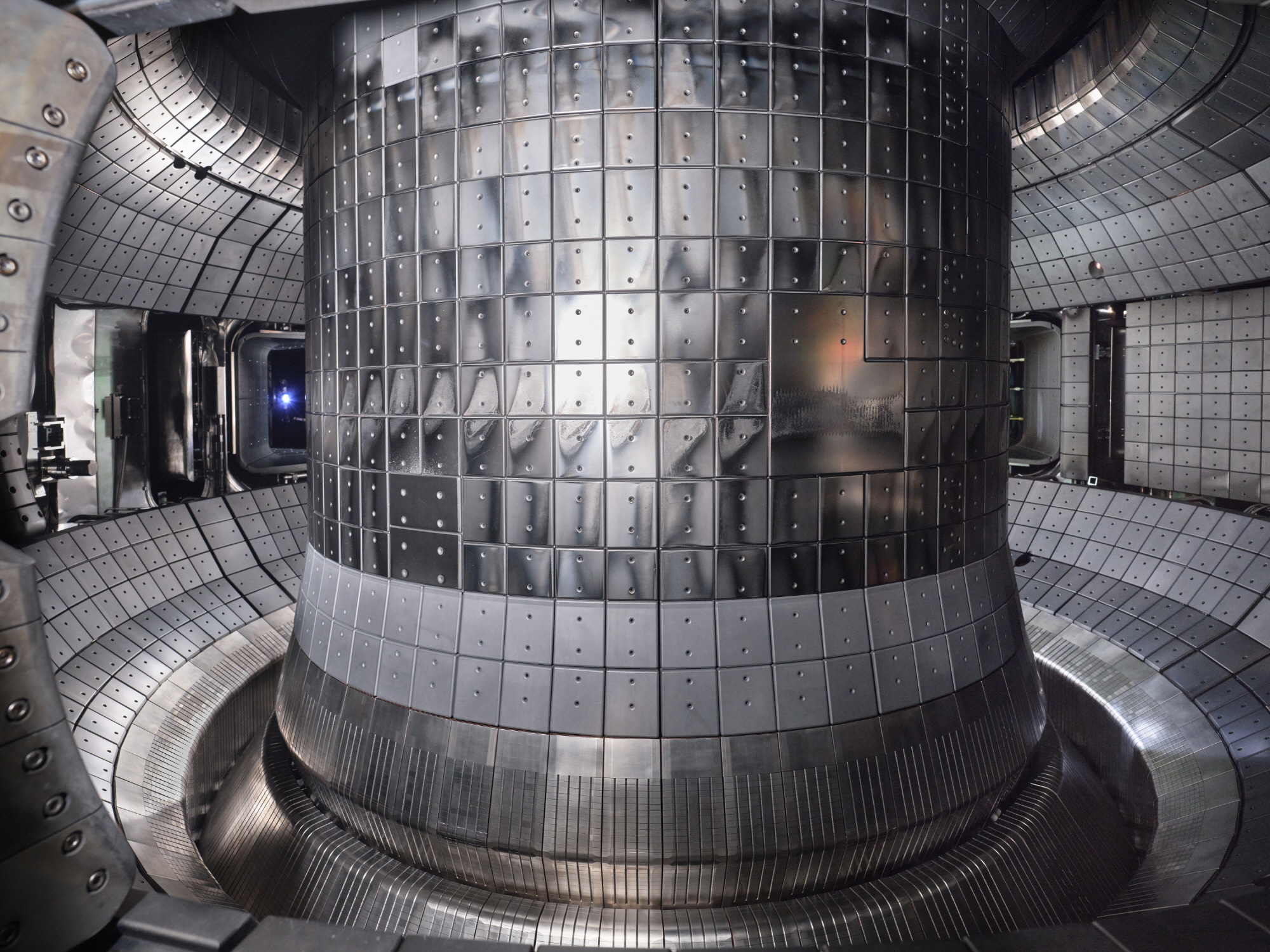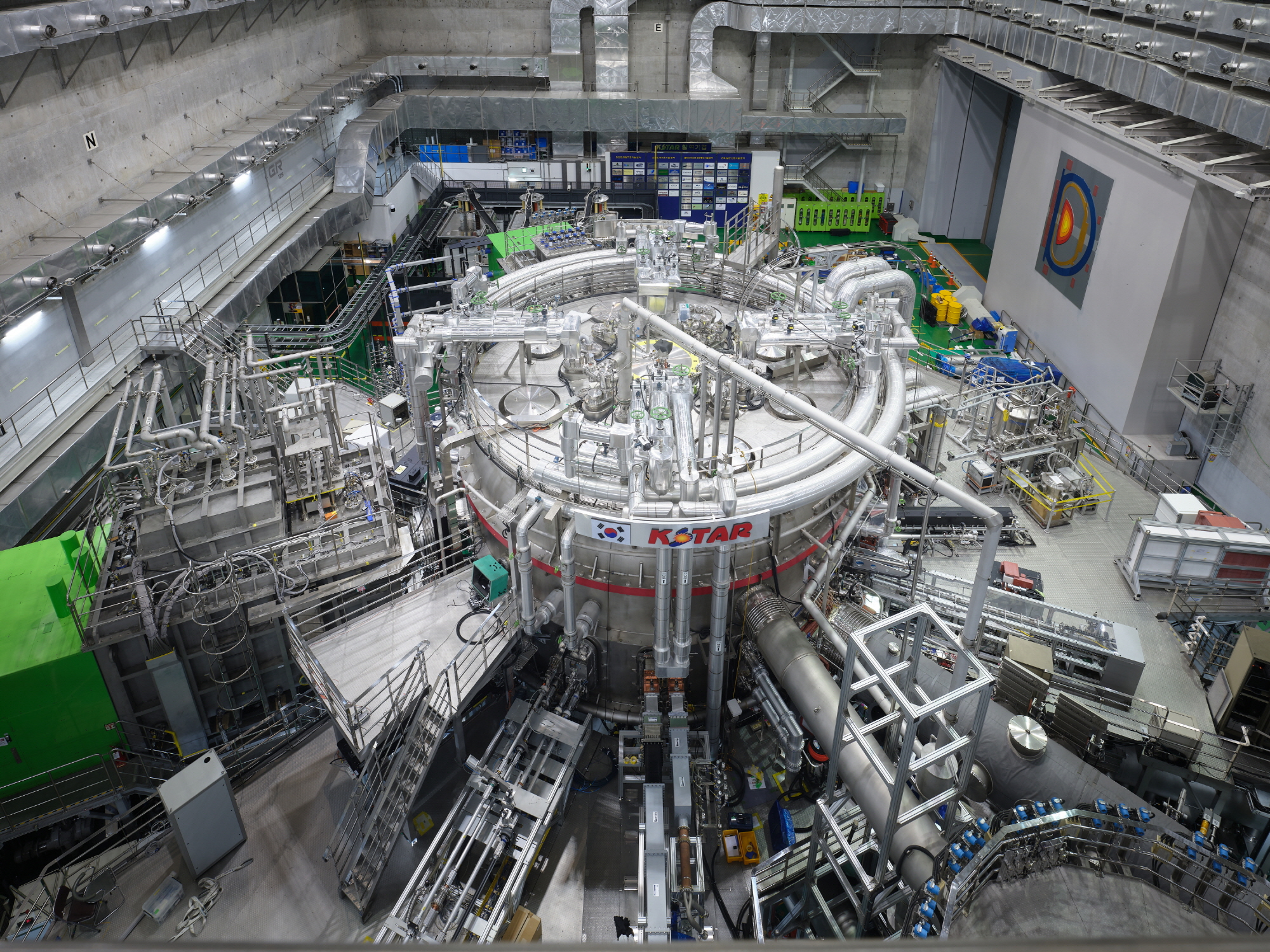News & Media
News & Media
Green Light on Continuous Fusion Plasma Operations Technology
- NameKFE
- Date2024-04-04
- Hit6,887
Green Light on Continuous Fusion Plasma Operations Technology
-A new world record of 48 seconds at 100 million degrees
-H-mode operations break the 100 second wall

The Korean artificial sun, KSTAR, broke its previous plasma operation record during its first plasma campaign after upgrading its divertors, one of plasma facing components, to tungsten monoblocks.
The Korea Institute of Fusion Energy(KFE) announced that it successfully sustained the plasma with ion temperatures of 100 million degrees Celsius for 48 seconds during the last KSTAR plasma campaign run from December 2023 to February 2024. Additionally, it achieved the high confinement mode(H-mode) for over 100 seconds.
To develop fusion energy, it is essential to secure the technology to sustain high-temperature and high-density plasmas where fusion reactions occur most actively for longer durations. Fusion researchers are conducting various plasma experiments using fusion devices like KSTAR in order to achieve it.
KSTAR, a superconducting tokamak, has been leading research in long-pulse plasma operations. KSTAR achieved its milestone of reaching 100 million degree plasma in 2018 for the first time and it set a new record by sustaining plasma with an ion temperature of 100 million degrees for 30 seconds in 2021.
During the latest campaign, the KSTAR team succeeded in extending the operation of ultra-high-temperature plasma to 48 seconds, maintaining an ion temperature of 100 million degrees. This achievement was based on improvements in the performance of the plasma heating systems and advancements in high-temperature plasma operation and control techniques. The plasma duration resulted in a new record in the field of ion temperatures beyond 100 million degrees.
Furthermore, the KSTAR team also successfully maintained H-mode for a continuous duration of 102 seconds, which is the baseline operation mode for sustaining a high-temperature, high-density plasma state.
This is mainly due to the successful upgrade applied to KSTAR’s divertors with tungsten in 2023. In comparison with the previous divertors based on Carbon, the new tungsten divertors showed only a 25% increase in surface temperature under similar heat loads. This provides significant advantages for long-pulse high heating power operations.
Through these experiments, the KSTAR team proved that the upgrade to tungsten divertors was successful and that they were functioning as planned. They also confirmed that key components of KSTAR, such as heating, diagnostic, control systems, had ensured the system reliability required for prolonged plasma operations.
Dr. Si-Woo Yoon, Director of the KSTAR Research Center remarked that “Despite being the first experiment run in the environment of the new tungsten divertors, thorough hardware testing and campaign preparation enabled us to achieve results surpassing those of previous KSTAR records in a short period”. He further added that “To achieve the ultimate goal of KSTAR operation, we plan to sequentially enhance the performance of heating and current drive devices and also secure the core technologies required for long-pulse high performance plasma operations.”
The ultimate goal of KSTAR is to achieve 300 seconds of plasma operation with ion temperatures over 100 million degrees. To accomplish this goal, the KSTAR team has been focusing on essential research areas and also improving device performance. This includes installing additional tungsten plasma facing components and securing real-time feedback control utilizing artificial-intelligence technology to improve device performance.
KFE President, Dr. Suk Jae Yoo stated that “this research is a green light for acquiring core technologies required for the fusion DEMO reactor”, and that “we will do our best to secure core technologies essential for the operation of ITER and the construction of future DEMO reactors.”
Meanwhile, researchers at KSTAR, through collaborative research with researchers from PPPL, USA, recently developed an error field(EF) optimization model using KSTAR’s external magnetic coils and proved a reliable control logic for stabilizing the instabilities in both the edge and center of plasma through detailed experiments and simulations. This research was published in Nature Communications in February 2024 with the title “Tailoring tokamak error fields to control plasma instabilities and transport.”


보안문자를 입력 후 확인 버튼을 누르세요.
